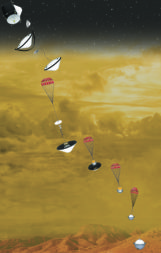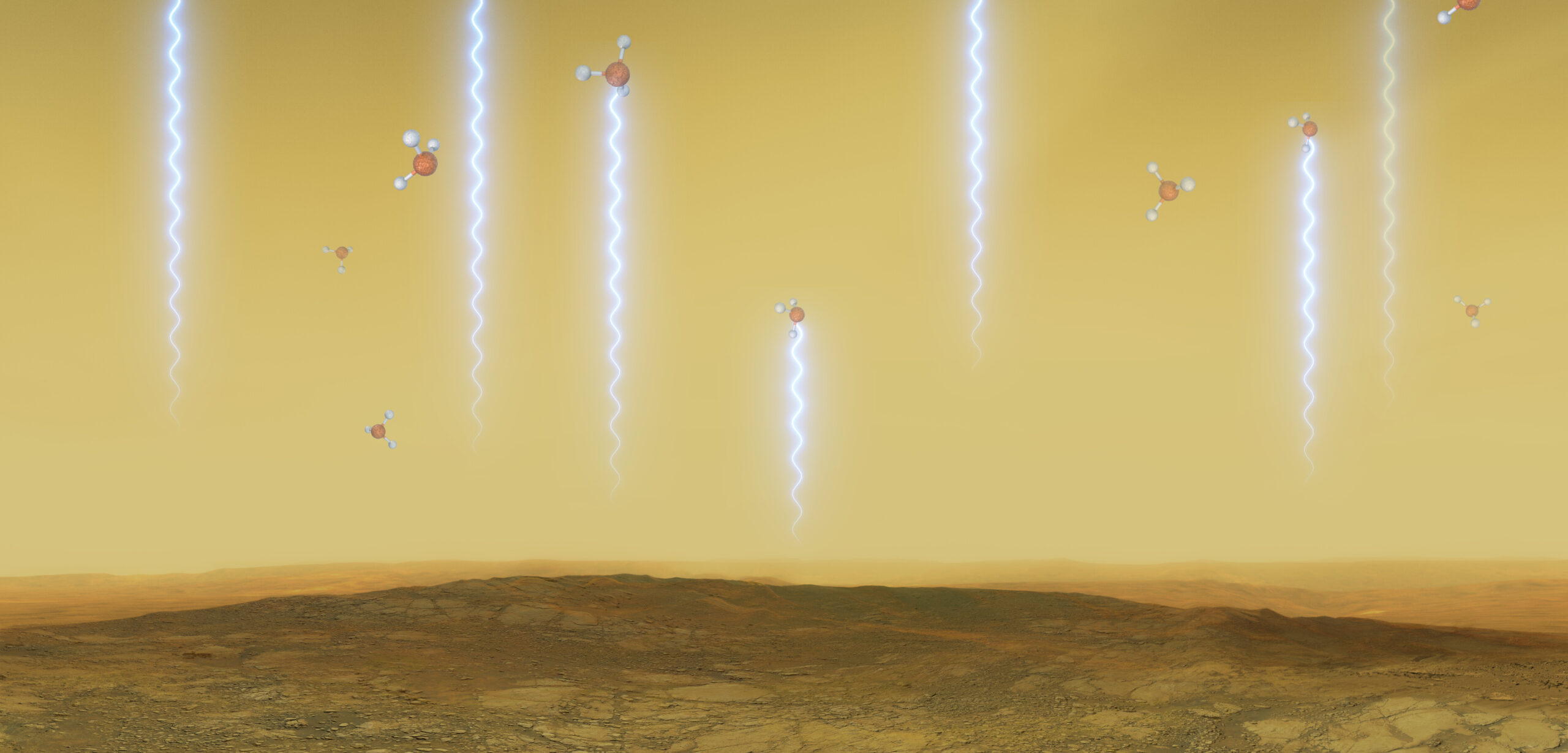
Over the years, space missions to hellish Venus have been few and far between. But the idea of intensely studying that nearby cloud-veiled globe has just received a renewed lease on life, quite literally.
A global team of researchers using ground-based observatories announced Sept. 14 the detection of phosphine gas wafting about in the clouds of Venus. On Earth, this gas is only made in significant quantities industrially — or by microbes that thrive in oxygen-free environments. The detection has given rise to the thought of extraterrestrial “aerial” life on hostile Venus.
This promising find begs the question: Now what?
SpaceNews contributor Leonard David discussed this issue with astrobiologist David Grinspoon, a senior scientist at the Planetary Science Institute and an expert on surface-atmospheric interactions on terrestrial planets, such as Venus.
This new finding has seemingly catapulted Venus into a headline-grabbing topic. Why so and what does it mean for new missions?
A news cycle and the cycles of planetary missions follow fundamentally different time scales. This is known. It’s important to realize that, before this discovery, there was already renewed momentum for Venus and for good reasons. Possible biology in the clouds was already one of those reasons being considered.
There are many other reasons in terms of just trying to understand the history of a nearby Earthlike planet and the relevance for exoplanets. That momentum is deeper and longer-lived than just this discovery … which is a good thing because this discovery could go away.
You mean like the saga of ALH84001, the Mars meteorite that was claimed in 1996 to contain fossils of ancient Martian life?
That’s a pretty good analogy because that was a very useful mistake, although we don’t know for sure that it was a mistake. It catalyzed the whole Astrobiology Institute and got everyone to focus on the early Mars environment. So if this is a similar story then it is good news as it shines a spotlight on the Venus environment. So if it turns out to be ALH84001 for Venus, I’d be totally happy with that.
Could this Venus life assertion be an embarrassing mistake?
I don’t think it’s going to be like that. It is possible that it is not phosphine because that’s a very hard observation to make. But the researchers involved are top-notch and they did it carefully. So I think it’s a very serious, credible claim. But there has to be follow-up. That follow-up could prove it to be there … and could prove it’s not there.
Again, I don’t want the whole case for Venus exploration to hinge on this discovery, but it does add momentum, whether or not this observation stands up.
Isn’t NASA considering a possible Venus mission within its Discovery-class program?
NASA does have two proposed Discovery missions for Venus under review, the VERITAS and DAVINCI+. Both are really good missions and in full disclosure, I’m on the DAVINCI+ proposal. Both fill in huge gaps in our understanding of terrestrial planets and Venus. NASA could select both of them as they are very complementary to one another. Then we’d have a little bit of a Venus program and that’s long overdue.
But what can be done near-term regarding next steps?
There are three obvious categories of next step. One is follow-up observations to make sure the new Venus finding is real. ESA’s BepiColombo spacecraft [en route to Mercury] is going to make close passes of Venus.
For the second category, laboratory experiments can be done that haven’t been done. They can show what phosphine does in a Venus-like environment and what the biological possibilities are. Earth-based laboratory work can be done to deepen our education and our response to this new find.
A third category is to go to Venus and see what’s happening in situ. NASA is already in progress on this. But in the meantime, there are private groups that are stepping in … a kind of fill in the gap measure. They’d be smaller, more-focused missions done with a very different philosophy.

I gather one of those is Rocket Lab using its Electron booster with Photon spacecraft to explore Venus, a flight they say can happen in 2023.
It’s so cool that private individuals and companies are willing to put resources into this. It is a totally different category than the other new space, private activities going on. It’s a kind of pure philanthropy. There’s no profit-driven business model to send missions to look for life on Venus. This is investing in a scientific expedition that supports a high-risk, high payoff activity that, potentially, produces a hugely important, transformative scientific discovery.
Then there’s Breakthrough Initiatives, the privately-funded space group bankrolled by philanthropist Yuri Milner. The group is funding a study inspired by the possible life on Venus detection and you’re part of the project leadership.
The study is meant to come up with a viable mission able to test the idea of life in the clouds of Venus, within the constraints of a relatively small, focused, privately-funded mission. We’re working with Rocket Lab to see what the best use of that opportunity would be. It is ambitious because it has never been done as a privately-funded enterprise before.
Any other details available about the Breakthrough Initiatives study?
Actually, we’re also examining small, medium and larger missions. We’re not locking into one possible plan. We are looking at a few different scenarios.

What kind of instruments could be flown to further study the promising Venus biosignature?
We’re at an early stage in saying what instruments we could include. We do have the opportunity to be a little more open to risk. The rules are a bit different. We can’t automatically just reject something because it’s not flight ready. We are open to innovative things that haven’t been done before.
Your study would be completed when?
The Breakthrough Initiatives report should be done in roughly six months.
You have been an advocate of cloud life at Venus since the 1990s. Are you heartened that others are now in pursuit of this viewpoint?
I have always been the guy at the conference in the Venus session giving that last talk about the possible life in the clouds. And people would roll their eyes. They kind of tolerated it because of my other work about the clouds, the surface and Venus’ atmosphere. The life idea I have been pushing was not really embraced. But recently it has been more embraced, not with the phosphine finding. It is because our models have been changing in the last few years.
It looks much more like Venus may have had a long habitable epoch on its surface, maybe billions of years of oceans. Then it should have had a biosphere. Therefore, you have to ask what happened to that biosphere when the surface went bad?
But I’m also wary of having life-friendly clouds as the only reason we’re interested in Venus. It needs to be broader than just the life question.
For instance, the exoplanet community is going to be finding a lot of planets in the Venus zone. They need ground-truth and want us to send missions to Venus. It will help them understand what is now a trickle, but will soon become a fire hose of information about terrestrial planets in the galaxy.
Leonard David is author of Moon Rush: The New Space Race (National Geographic, 2019) and Mars: Our Future on the Red Planet (National Geographic, 2016). He has been reporting on the space industry for more than five decades.
